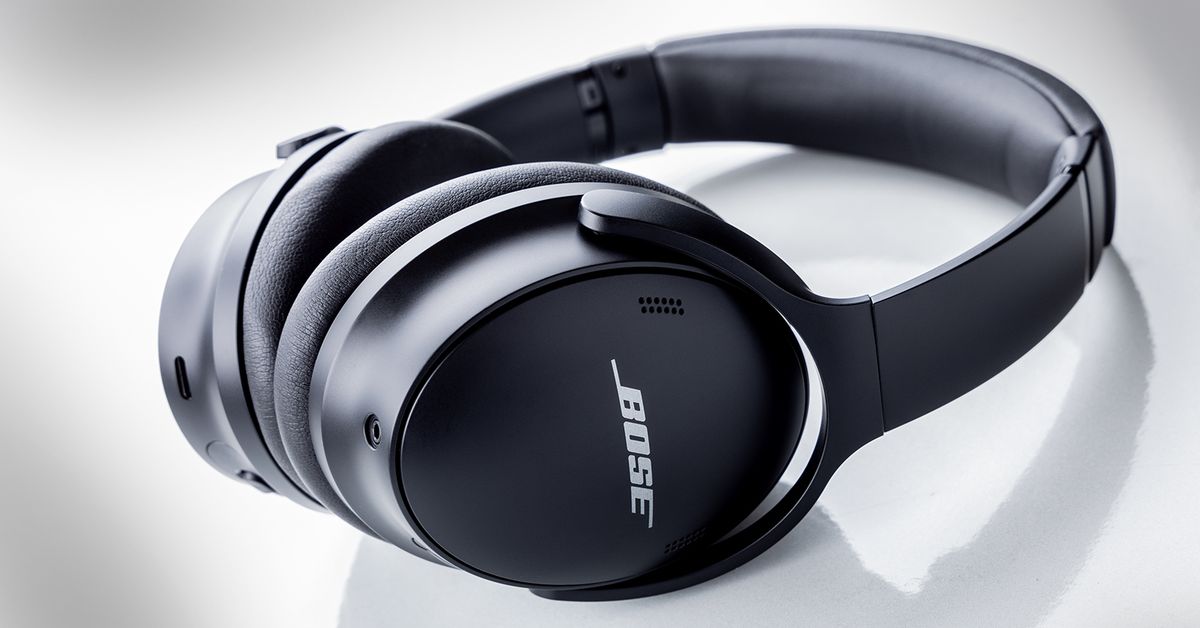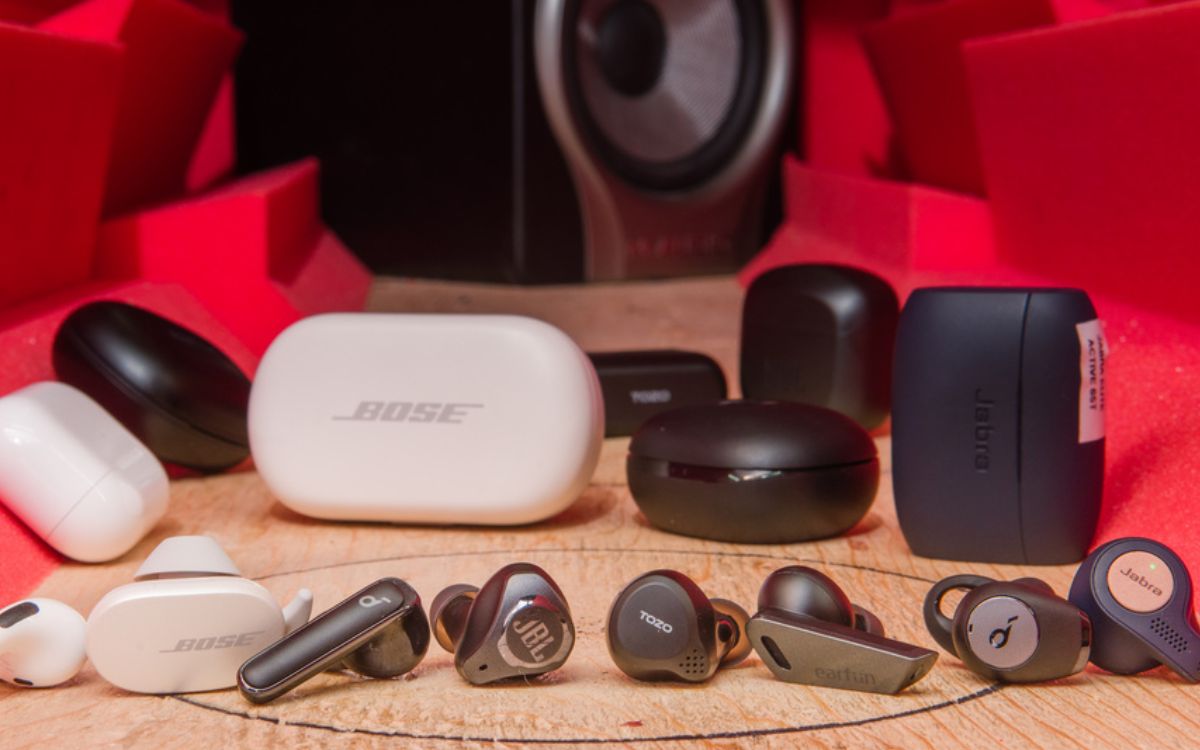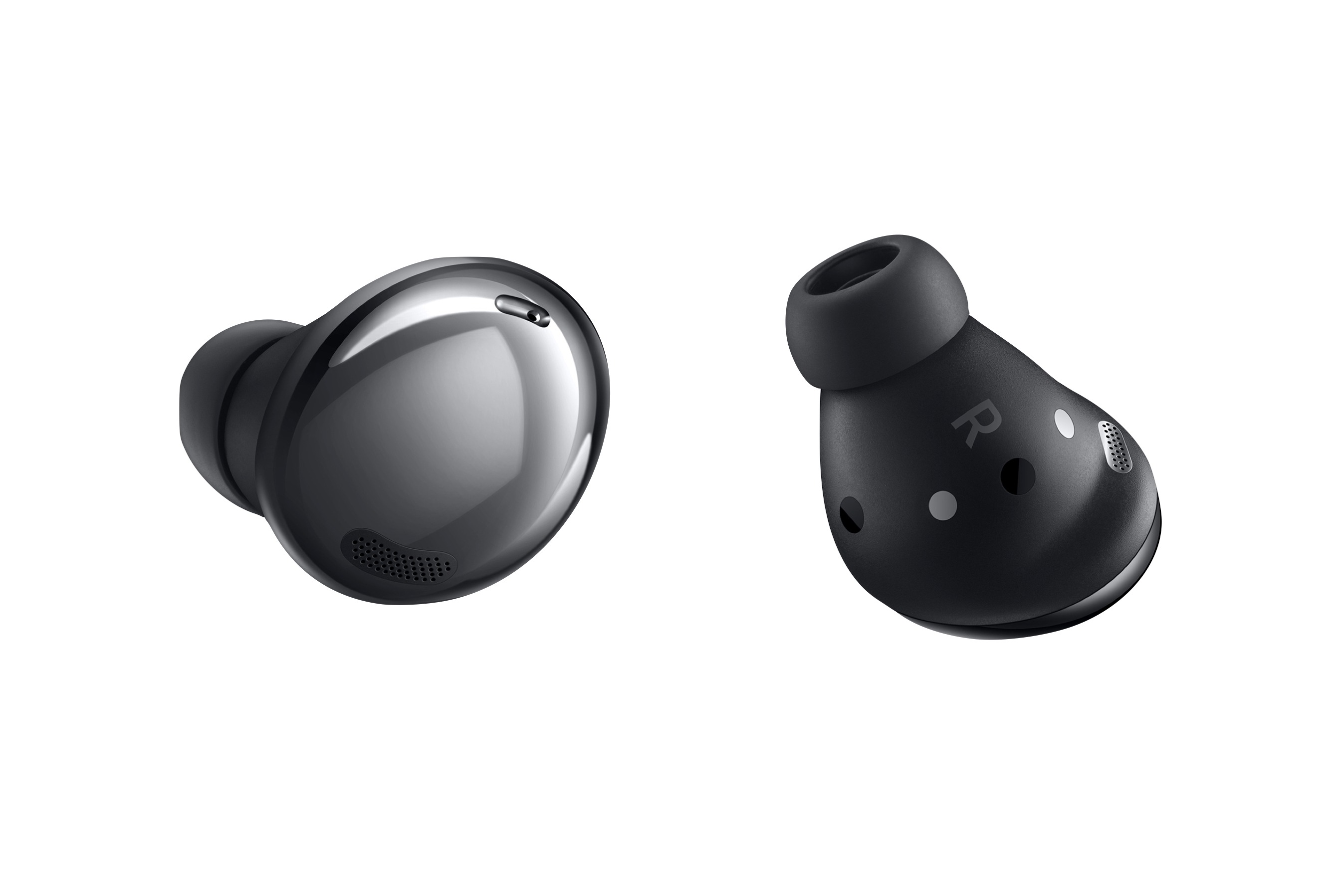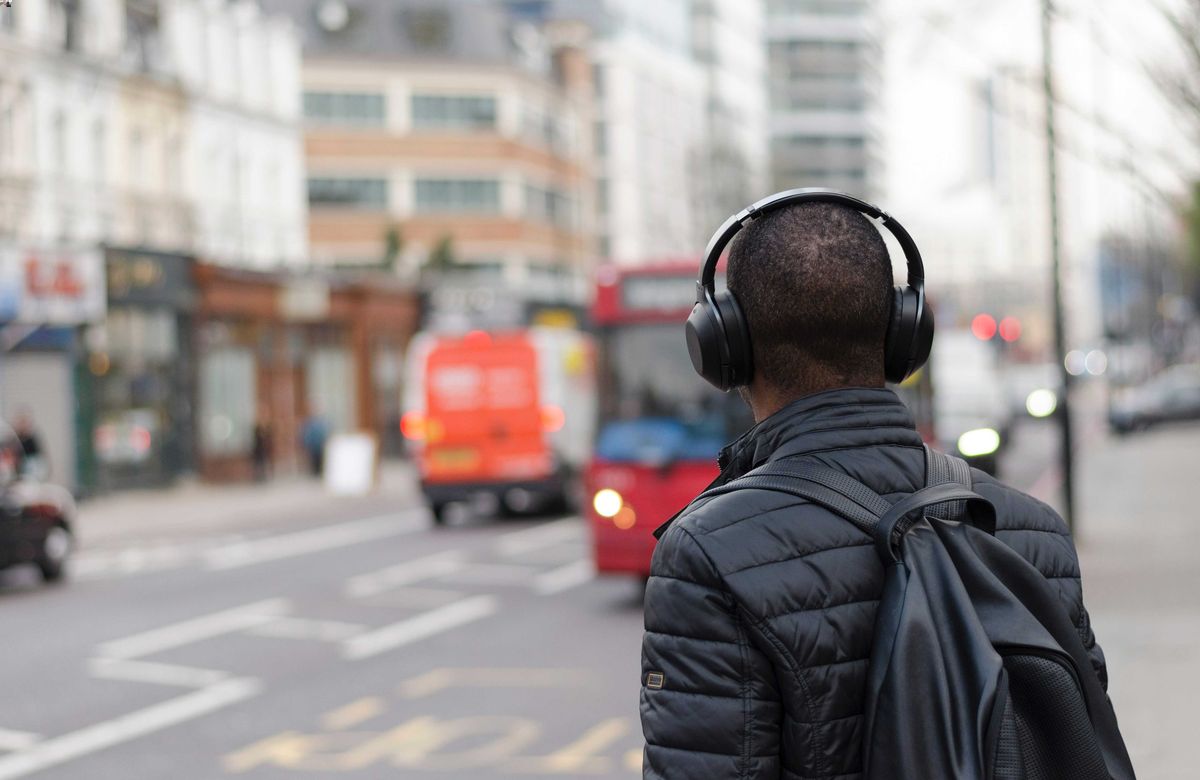Home>Production & Technology>Noise Cancellation>What Is Passive Noise Cancellation


Noise Cancellation
What Is Passive Noise Cancellation
Modified: January 26, 2024
Learn what passive noise cancellation is and how it helps block out unwanted noise with our comprehensive guide. Perfect for those looking for a quieter environment.
(Many of the links in this article redirect to a specific reviewed product. Your purchase of these products through affiliate links helps to generate commission for AudioLover.com, at no extra cost. Learn more)
Table of Contents
Introduction
Noise is an ever-present element in our lives. Whether it’s the hustle and bustle of a busy city street, the hum of an airplane engine, or the chatter of coworkers in an open office, unwanted noise can be intrusive and distracting. In an attempt to find solace amidst the chaos, many people turn to noise cancellation technology. One type of noise cancellation that has gained popularity is passive noise cancellation. But what exactly is passive noise cancellation and how does it work?
Passive noise cancellation refers to the reduction of unwanted sound through physical means, such as materials and design features, without the use of electronic circuitry. Unlike active noise cancellation, which relies on microphones and speakers to generate opposing sound waves, passive noise cancellation is a simpler and more straightforward approach.
The concept of passive noise cancellation has been around for decades, with its roots primarily in the field of audio engineering. It has been widely implemented in various industries and applications, ranging from headphones and earbuds to architectural design and automotive engineering. The primary goal of passive noise cancellation is to create a barrier that effectively blocks out or reduces external noise, allowing users to enjoy a more immersive and focused experience in their environment.
In this article, we will delve deeper into the world of passive noise cancellation, exploring its mechanisms, advantages, limitations, and how it compares to its counterpart, active noise cancellation. We will also uncover its common applications across different industries, shedding light on the role passive noise cancellation plays in enhancing our daily lives.
Definition of Passive Noise Cancellation
Passive noise cancellation, also known as noise isolation or sound blocking, is a technique used to reduce or eliminate unwanted noise without the need for electronic components or active sound cancellation mechanisms. It relies on physical methods to minimize the amount of external noise that reaches the listener’s ears.
The fundamental principle of passive noise cancellation is to create a physical barrier that obstructs and absorbs sound waves, preventing their transmission to the listener’s ear. This barrier is achieved through the use of specialized materials, design features, and fit that effectively block, dampen, or reflect sound.
One key element of passive noise cancellation is the use of sound-deadening materials. These materials, often incorporated into headphones, earbuds, and other audio devices, are engineered to absorb and dissipate sound waves. They have properties that convert sound energy into heat energy, reducing the intensity of the incoming noise. Common sound-deadening materials include foam, rubber, and acoustic fabrics.
In addition to sound-absorbing materials, another vital aspect of passive noise cancellation is the design of the audio device. The shape and structure of the headphones or earbuds play a significant role in reducing external noise. Over-ear headphones, for example, enclose the listener’s ears with large, padded cups that create a physical barrier against sound waves. Similarly, properly designed earbuds with a snug fit create an effective seal in the ear canal, blocking out external noise.
By combining these materials and design elements, passive noise cancellation aims to create a more immersive and focused listening experience. It helps users enjoy their audio content without being distracted by background noise, ultimately enhancing sound quality and increasing the overall enjoyment of the audio.
While passive noise cancellation is effective in reducing ambient noise, it is important to note that it cannot completely eliminate all sounds. It provides varying levels of noise reduction, depending on the design, materials used, and fit of the device. The effectiveness of passive noise cancellation can also be influenced by the frequency and intensity of the external noise source.
In the next section, we will explore how passive noise cancellation works and the mechanisms behind its effectiveness in reducing unwanted noise.
How Does Passive Noise Cancellation Work?
Passive noise cancellation relies on several mechanisms to reduce or block out unwanted noise. These mechanisms work together to create a barrier between the listener and the external noise source, allowing for a more enjoyable and focused listening experience.
One of the primary methods used in passive noise cancellation is sound absorption. Sound-absorbing materials, such as foam or acoustic fabrics, are used to capture and dissipate sound waves. When the sound waves encounter these materials, they are converted into heat energy, reducing the intensity of the noise. The absorption properties of these materials are crucial in reducing the impact of external noise on the listener.
The design of the audio device also plays a significant role in passive noise cancellation. Over-ear headphones, for example, feature large padded cups that enclose the listener’s ears. These cups create a physical barrier that blocks out external noise, preventing it from reaching the ears. The design of earbuds is also important in achieving passive noise cancellation. Properly designed earbuds with a snug fit create an effective seal in the ear canal, reducing the amount of external noise that can enter the ear.
Another mechanism employed in passive noise cancellation is sound reflection. By strategically designing the shape and structure of the audio device, sound waves can be redirected or reflected away from the listener’s ear. This helps to minimize the impact of external noise and increase the clarity of the desired audio.
Passive noise cancellation also takes advantage of the concept of impedance. Impedance is the measure of resistance to the flow of sound waves. By employing materials with a high impedance, such as dense foam or acoustic isolators, the transmission of sound can be reduced, preventing unwanted noise from reaching the listener’s ears.
It’s important to note that while passive noise cancellation is effective in reducing background noise, it does have limitations. It is most effective at blocking out continuous, low-frequency sounds, such as the hum of an air conditioner or the rumble of a train. However, it may struggle to block abrupt, high-frequency noises, such as sirens or alarms. Additionally, the performance of passive noise cancellation can vary depending on the fit of the device and the intensity and frequency of the external noise source.
In the next section, we will discuss the advantages of passive noise cancellation and why it has become a popular choice among users.
Advantages of Passive Noise Cancellation
Passive noise cancellation offers several advantages that make it a popular choice among users who seek to reduce or block out unwanted noise. From enhancing sound quality to promoting concentration, here are some key benefits of passive noise cancellation:
- Improved Sound Quality: By reducing or eliminating background noise, passive noise cancellation allows listeners to focus on the desired audio. This leads to a more immersive and enjoyable listening experience. The absence of external noise interference enhances the clarity and detail of the audio, making it easier to discern nuances and appreciate the finer aspects of the sound.
- Increased Concentration: In noisy environments such as offices or public transportation, passive noise cancellation can help individuals maintain focus and concentration. By blocking out distractions, it aids in reducing cognitive load and enables users to concentrate on their tasks or enjoy their chosen audio without being disrupted by external noise.
- Protection of Hearing: Continuous exposure to high levels of noise can have detrimental effects on hearing health. Passive noise cancellation can limit the amount of harmful noise that reaches the listener’s ears, thereby reducing the risk of hearing damage. By minimizing the need to raise the volume to overcome background noise, passive noise cancellation promotes a safer listening experience.
- Comfort and Portability: Passive noise cancellation is often incorporated into headphones and earbuds, making them comfortable to wear for extended periods. They provide a secure fit and minimize sound leakage, allowing individuals to enjoy their audio content without disturbing others nearby. Additionally, many passive noise-canceling devices are lightweight and portable, making them convenient for travel or on-the-go use.
Another advantage of passive noise cancellation is its energy efficiency. Unlike active noise cancellation, which requires power from batteries or a power source, passive noise cancellation functions without the need for additional energy. This makes passive noise-canceling devices more cost-effective and eliminates the need for regular charging or battery replacements.
Overall, passive noise cancellation offers an effective and accessible solution for reducing unwanted noise. It enhances sound quality, promotes concentration, protects hearing, and provides comfort and portability. However, it is worth noting that the effectiveness of passive noise cancellation can vary depending on the quality of the device, the fit, and the intensity and frequency of the external noise.
In the next section, we will explore the limitations of passive noise cancellation and how it compares to active noise cancellation.
Limitations of Passive Noise Cancellation
While passive noise cancellation offers significant benefits, it is essential to be aware of its limitations. Understanding these limitations can help manage expectations and determine whether passive noise cancellation is suitable for specific environments or needs. Here are some of the key limitations of passive noise cancellation:
- Partial Noise Reduction: Passive noise cancellation is effective at reducing continuous, low-frequency sounds, such as background chatter or engine rumble. However, it may have limited success in blocking sudden or high-frequency noises, such as door slams or sirens. The effectiveness of passive noise cancellation can vary depending on the quality of the device, fit, and the intensity and frequency of the external noise source.
- Fit and Comfort: Achieving optimal passive noise cancellation relies on a proper fit of the audio device. Over-ear headphones must create a sufficient seal around the ears, while earbuds need to fit snugly in the ear canal. However, finding the right fit can be a challenge for some individuals, as everyone has different ear shapes and sizes. Additionally, extended wear of some passive noise-canceling devices may cause discomfort or fatigue. It is crucial to find a device that offers both effective noise cancellation and a comfortable fit.
- Environmental Limitations: Passive noise cancellation can be less effective in extremely noisy environments, such as construction sites or concerts. These environments often produce high-intensity sounds that may overpower the noise reduction capabilities of passive techniques. In such cases, alternative measures, like active noise cancellation or ear protectors, may be more suitable for achieving adequate noise reduction.
- Dependency on Design and Materials: The effectiveness of passive noise cancellation depends on the quality of design and materials used in the audio device. Lower-quality materials and less advanced design features may result in subpar noise reduction. It is important to choose devices from reputable manufacturers that prioritize the development of effective passive noise cancellation technology.
Despite these limitations, passive noise cancellation continues to be widely used and admired for its simplicity and effectiveness in reducing unwanted noise. It offers a cost-effective and accessible solution for everyday noise cancellation needs, allowing users to enjoy improved sound quality and increased concentration on tasks or audio content.
In the next section, we will compare passive noise cancellation to active noise cancellation, exploring the differences between these two approaches to noise reduction.
Passive Noise Cancellation vs. Active Noise Cancellation
Passive noise cancellation and active noise cancellation are two distinct approaches to reducing unwanted noise, each with its own set of advantages and limitations. Understanding the differences between these two techniques can help users make an informed decision when selecting a noise-cancelling solution. Here’s a comparison of passive noise cancellation and active noise cancellation:
- Mechanism: Passive noise cancellation relies on physical means, such as materials and design features, to block or reduce external noise. It does not require any electronic circuitry or power source. In contrast, active noise cancellation employs microphones and speakers to analyze and generate sound waves that cancel out incoming noise. Active noise cancellation uses electronic components and requires power, typically from batteries or a power source.
- Noise Reduction: Passive noise cancellation is effective in reducing background noise, particularly continuous, low-frequency sounds. It offers partial noise reduction, minimizing the impact of the ambient environment on the listener’s experience. Active noise cancellation, on the other hand, is more efficient in reducing a broader range of frequencies and can effectively cancel out both continuous and abrupt noise. Active noise cancellation provides a more comprehensive and immersive noise reduction experience.
- Adaptability: Passive noise cancellation operates consistently, regardless of the surrounding environment. It does not actively adjust or adapt to changing noise conditions. In contrast, active noise cancellation can adapt to varying noise levels and frequencies in real-time. It continuously analyzes the ambient noise and adjusts the generated sound waves to counteract the incoming noise, providing a more dynamic noise-cancelling experience.
- Battery Life: Passive noise cancellation does not require any additional power, making it energy-efficient and eliminating the need for battery replacements or device charging. On the other hand, active noise cancellation relies on batteries or a power source to operate. The battery life of active noise-cancelling devices may vary depending on usage and device specifications.
- Cost: Passive noise-cancelling devices are generally more affordable than active noise-cancelling devices. Active noise-cancelling technology involves the use of additional electronic components, which can contribute to a higher price point. Passive noise cancellation offers a cost-effective solution for individuals seeking noise reduction without the added complexity or expense of active noise cancellation.
Ultimately, the choice between passive and active noise cancellation depends on individual preferences, needs, and budget. Passive noise cancellation is suitable for individuals looking for a straightforward and budget-friendly solution to reduce background noise. Active noise cancellation, with its more advanced technology and comprehensive noise reduction capabilities, is ideal for those who require maximum noise isolation and a dynamic noise-cancelling experience.
In the next section, we will explore the common applications of passive noise cancellation across various industries and settings.
Common Applications of Passive Noise Cancellation
Passive noise cancellation has found its way into various industries and applications, proving to be a valuable technology for reducing unwanted noise. From personal audio devices to architectural design, here are some common applications of passive noise cancellation:
- Headphones and Earbuds: One of the most popular applications of passive noise cancellation is in headphones and earbuds. By using sound-absorbing materials and well-designed ear cups or ear tips, these devices block or reduce external noise, allowing users to enjoy their audio content without distraction in both public and private settings.
- Architectural Design: Passive noise cancellation is also employed in architectural designs to create quieter and more comfortable living or working spaces. Soundproofing materials, such as acoustic panels and insulation, are used to reduce the transmission of external noise through walls, floors, and ceilings. These designs help maintain privacy and minimize disturbances from outside noise sources.
- Automotive Engineering: Active noise cancellation is often used in vehicles to reduce engine and road noise, but passive noise cancellation techniques are also employed to further enhance cabin comfort. Noise-blocking materials, insulation, and optimized designs are utilized to minimize the impact of external noise and vibrations, providing a quieter and more enjoyable driving experience.
- Industrial Settings: In industrial environments, where high levels of noise are prevalent, passive noise cancellation techniques are employed to protect workers’ hearing. Soundproof enclosures, earmuffs, and earplugs with passive noise cancellation properties are utilized to reduce the intensity of noise exposure, preventing occupational hearing loss and improving worker safety.
- Aviation: Passive noise cancellation is an integral part of aviation headsets used by pilots and air traffic controllers. These headsets are designed with noise-reducing ear cups and specialized materials that minimize the impact of loud engine noise and communication chatter, allowing clearer and more effective communication in a noisy aircraft environment.
Passive noise cancellation techniques are also utilized in various other applications, such as home theaters, conference rooms, call centers, and recording studios. These environments benefit from noise reduction, enhancing the quality of audio playback, enabling effective communication, and achieving optimal recording conditions.
As passive noise cancellation continues to evolve, new applications are being discovered, and the technology is being integrated into an even wider range of products and settings. Its versatility and effectiveness make it a valuable tool for enhancing the overall experience and functionality in various industries and everyday life situations.
In the concluding section, we will summarize the key points discussed and emphasize the significance of passive noise cancellation in our daily lives.
Conclusion
Passive noise cancellation is a valuable technology that allows individuals to reduce or block out unwanted noise in various settings. By utilizing specialized materials, clever design features, and a snug fit, passive noise cancellation provides numerous benefits in terms of sound quality, concentration, and hearing protection.
Through the use of sound-absorbing materials, passive noise cancellation effectively minimizes the impact of continuous, low-frequency noise, enhancing the clarity and detail of desired audio content. It also promotes concentration by reducing distractions in noisy environments and offers a level of hearing protection by limiting exposure to harmful noise levels.
Although passive noise cancellation has its limitations in terms of noise reduction capabilities and adaptability to different environments, it remains a popular choice due to its simplicity, cost-effectiveness, and energy efficiency. Passive noise-cancelling devices, such as headphones and earbuds, provide users with a comfortable and portable solution for enjoying their audio content without external disruptions.
Passive noise cancellation is widely applied across various industries and settings. From personal audio devices to architectural design, automotive engineering to industrial settings, this technology has proven to be invaluable in enhancing sound quality, creating quieter spaces, and protecting individuals’ hearing.
As technology continues to advance, passive noise cancellation will likely improve, offering even more effective noise reduction capabilities. It will continue to play a vital role in providing a more immersive and enjoyable audio experience, reducing distractions, and creating a better quality of life in our increasingly noisy world.
In conclusion, passive noise cancellation is a powerful tool that allows us to escape the cacophony of the world and immerse ourselves in sound. By harnessing materials, design, and fit, it provides a barrier against unwanted noise, enhancing our listening experience and promoting concentration. Whether we are enjoying music, working in a bustling office, or seeking solace during travel, passive noise cancellation offers a respite from the noise that surrounds us and creates a more peaceful and enriching auditory environment.











